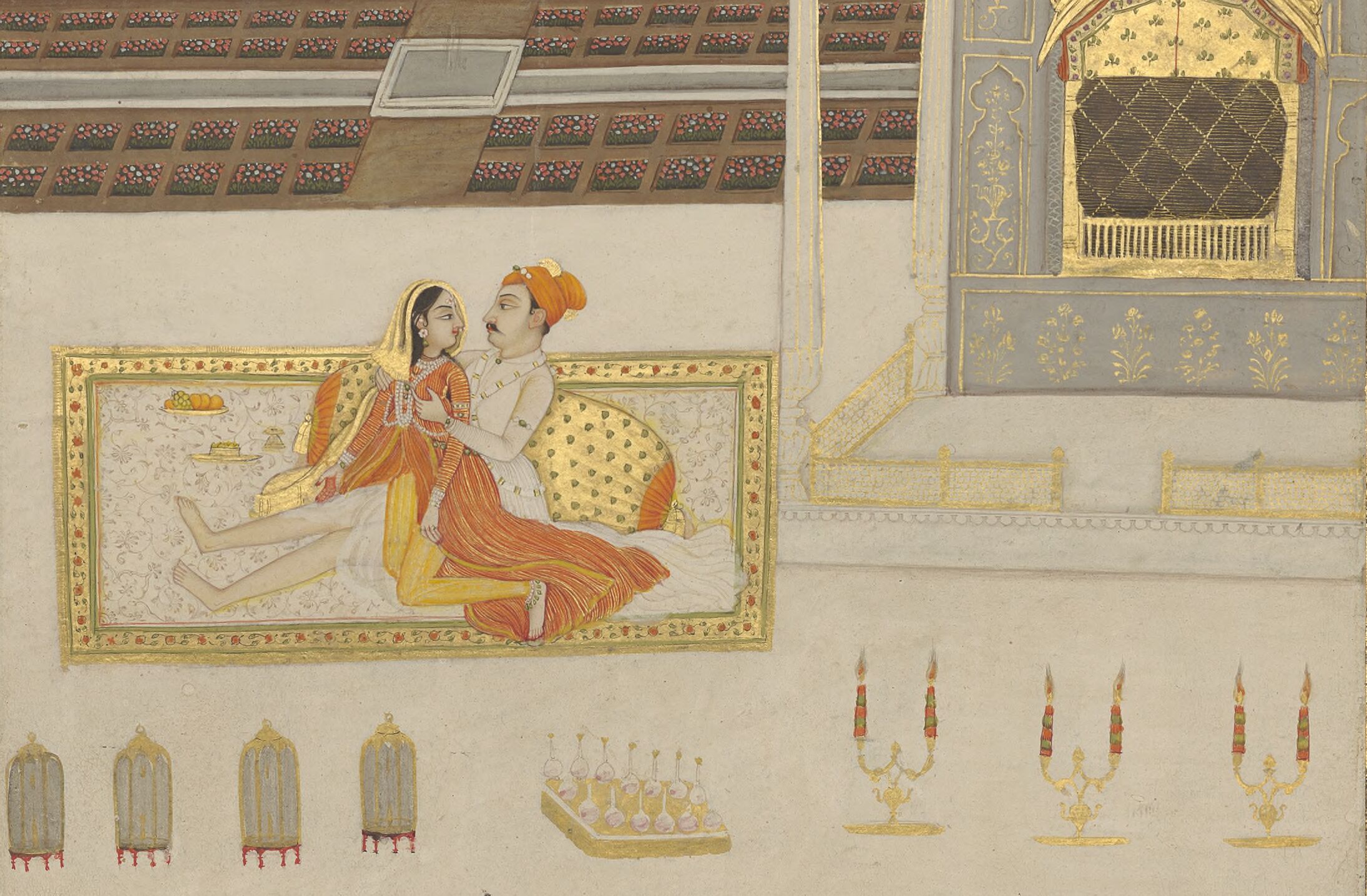Colonel Gentil's donation makes up the bulk of the collection of Indian miniatures now held by the Bibliothèque Nationale de France, some 2,000 works in all.
In 1752, Jean-Baptiste Gentil arrived in India as a simple midshipman in the French army in Pondicherry. He subsequently worked in the Deccan before ending his career in the service of the Nawab of Awadh. Here, like his French, Swiss, German and English contemporaries, he built up his Oriental library. Returning to France in 1778, he donated his entire collection to the Bibliothèque du Roi Louis XVI, comprising 183 Indian, Persian, Arabic and Sanskrit manuscripts; works on Oriental religion, history, arts and literature. Gentil himself had written several manuscripts in French on various subjects relating to India, including an Abrégé historique de l'Indoustan illustrated with Indian paintings he had commissioned.
Colonel Gentil's donation makes up the bulk of the collection of Indian miniatures now held by the Bibliothèque Nationale de France, some 2,000 works in all. It opens a new chapter in the history of Oriental collections in France, as it is one of the very first collections of Indian paintings assembled by a European in India. Gentil's personality ushered in a new type of collector and patron. He would serve as a model for others to follow in the 19th century. Sensitive and receptive to Indian culture, he wanted to present it to the French people in all its aspects.
Imperial paintings
The Gentil collection contains a representative sample of the preferred themes of the imperial studio, produced when the Mughal empire was at the height of its glory, between the reigns of Akbar and Jahangir. Such works include the miniatures attributed to the painter Miskin, depicting scenes from the Shah Nama recounting the legendary battle exploits of the ancient kings of Iran, written by Firdousi in the 11th century. One painting depicts Emperor Jahangir admiring a miniature presented to him by the painter Abul-Hasan, dated circa 1610, reminding him of his own role as patron of his artists. His interest in Mughal history is also expressed in an album containing a suite of portraits of twenty of the Timurid rulers, from Tamerlane (late 14th century) to Shah Alam II (1759-1806), probably copied from originals in the imperial collection.
Portraits et costumes indiens : [peinture]. Abul-Hasan. 1610
Provincial paintings
His collection also includes works more contemporary in style, such as those produced in the Faizabad or Lucknow region. It includes portraits of important figures, such as Nawal Rai, a Saksena Kayastha, who became minister to Shuja ud-Daula's father in 1739.
Apart from portraits, many of the main themes represented in the Lucknow school of the 18th century are depicted here: nocturnal scenes of entertainment in princely zenanas. A painting by Chitarman shows us a princess, seated under an awning and smoking huqqa, watching a show given at night by the ladies of the zenana, another a couple on a terrace at night painted in Faizabad around 1765, perhaps depicting the festival of lights (Diwali), a subject very much in vogue in provincial Mughal schools.
[Recueil de miniatures. Sujets historiques de la Perse] : [peinture]. Chitarman. 1765.
French manuscripts
While the Gentil collection reflects the taste of the Mughal court, it also reflects a wide range of interests. Gentil was also interested in Hinduism, as evidenced by his manuscripts written or translated into French and illustrated with paintings or vignettes. In a style derived from the Mughal school, but much less refined, the illustrations in the volume entitled Divinités des Indoustan tirées des Pouranas ou livre historique en samscrétam, reveal a rather free interpretation of Hindu iconographic codes.
Gentil had illustrated with one hundred and seventy-two vignettes a manuscript entitled l'Abrégé historique des Rajas de l'Indoustan, a translation of Sujan Ray Bhanzari Singh Batalavi's Khulasat al-tavarikh, written in 1695-1696, which he acquired in Bengal and translated himself. Gentil's translation begins with the reign of Bharata, India's eponymous ancestor, and ends with Raja Pithaura (Prithiviraja III), circa 1192, the last Hindu king of Delhi. The illustrations in l'Abrégé historique des Rajas de l'Indoustan are in the same style as several other works in his collection produced between 1770 and 1775, and may have been executed by the three painters in his studio. They undoubtedly represent the birth of the Company School style, to which the series of 24 large paintings commissioned in 1774 and depicting the façades of various palaces in Delhi, Agra and Faizabad also belong.
Gentil had himself depicted alongside Shuja, in the exercise of his functions as a military or diplomatic advisor. In one unfinished painting, he is shown as Shuja's military advisor. In another, he is shown alongside Shuja as a diplomatic advisor, signing the peace treaty after the battle of Buxar. (M. Archer, 1992).
Conclusion
The role that miniatures from the Gentil collection played in France in transmitting the heritage of India to the French is clear to see. The Gentil collection was consulted in 1788 by Nicolas Ponce, draughtsman and engraver of vignettes and prints, who was interested in the views and sites of the French colonies, and by Campion de Tersan, the famous French antique dealer, who made a careful study of it. It was also known to Parisian printers and engravers such as Firmin-Didot and collectors such as Philippe Burty, who loaned Indian works from their collections to the 1878 Universal Exhibition.
Published in january 2023
.png)



